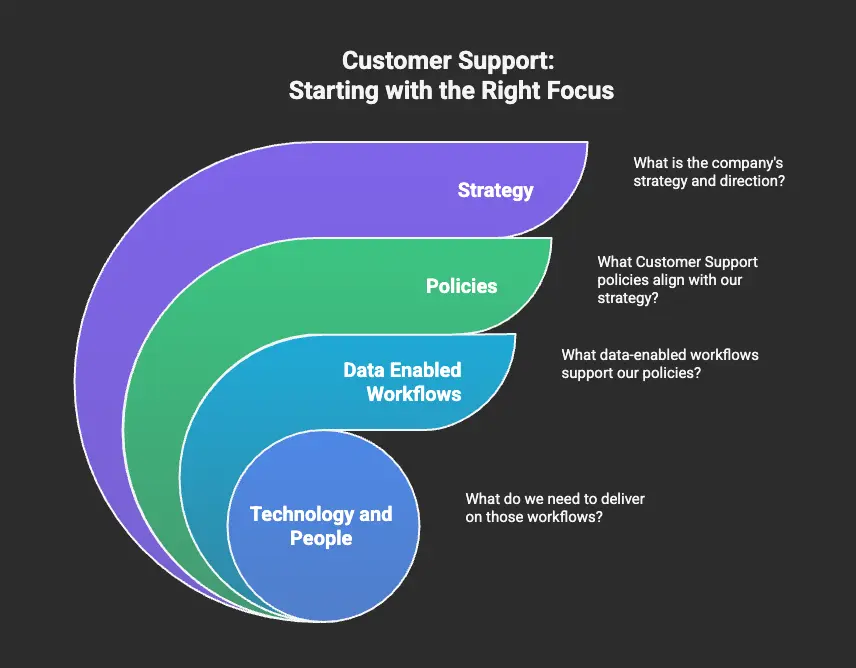Customer Support is not as edgy as Product or as sexy as Sales, but it’s a barometer for how a company functions.
Come on, let’s face it. Customer Support is supposed to be easy. If we can’t make a peanut butter and jelly sandwich, we probably can’t make a crème brûlée. If we can’t get Customer Support right, what can we get right?
A B2B2C client engaged me to fix Customer Support: “Our customers are getting frustrated. Their tickets are not addressed promptly enough.”
Many companies turn to technology to find the fix. Others throw more people at the problem.
Not this company.
Instead of leaning in, we stepped back.
First, we listened to what the data told us. The team was overwhelmed. The number of tickets was climbing, and the team couldn’t keep up. Our clients (i.e., other companies) should have been our priority, yet most of our tickets came from their customers (i.e., end-users.) A significant majority of those tickets could have been resolved through better education of the end-user, or was an issue only our client (not us, the service provider) could address.
I started by aligning customer support policies with business strategy.
I walked the executive leadership team back from a prior decision to have all help requests immediately enter the support queue. Their intent–to provide personalized, human touch in customer support–was not the right model for their business and could not scale.
With the leaders in agreement, we adjusted the process to align with the policy. We designed how we wanted support requests to move through the company, and then ensured that our systems had the data it needed to create the correct filters and gates for our designed workflow.
And then I sent a message to the company. “Heads up, y’all. We’re flipping the switch for Customer Support.”
And then we watched.
Our impact:
Within a month, the number of tickets dropped by 30%. The average time-to-first-response for all tickets (clients and end-users) dropped by half. For our client tickets, the time-to-first-response showed an even more dramatic improvement, dropping to a third of what it was previously.
We didn’t throw more technology and more people at the problem. We didn’t have to.
Instead, we changed our policies and our data-enabled workflows to align with the company’s strategic goals.
And the company’s Customer Support challenges started working itself out.
The team continuously monitors its success metrics and adjusts its workflows to fine-tune the system, anchored in the principles of how to steer Customer Support.
Strategy → Policies → Data Enabled Workflows → Technology and People
No extra costs. We just needed the right focus.
